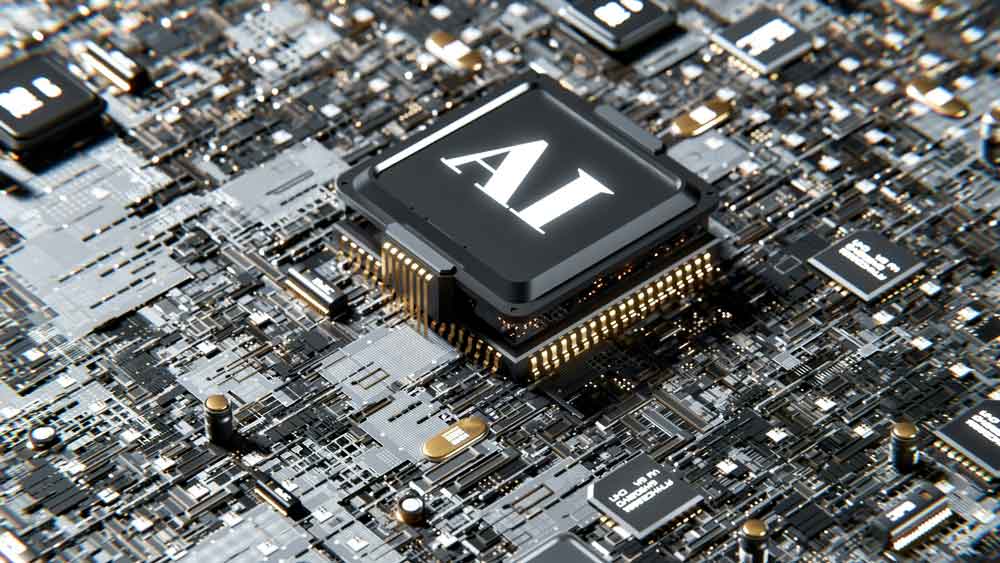Keeping quality high in today’s fast-moving production world is a big challenge. Traditional quality checks have worked well, but they can be slow, require a lot of work, and are prone to mistakes.
|
ADVERTISEMENT |
AI could change this by making quality control faster, more accurate, and easier to scale. It could help businesses spot problems, prevent failures, and improve production with greater precision than ever before.
Enhanced defect detection and prediction
AI could eventually spot tiny flaws like scratches, cracks, and size differences that even experienced human inspectors might miss. By analyzing large amounts of production data and product images, AI could help find problems faster, reduce delays, and minimize waste. This could make quality checks more consistent, reduce the need for human involvement, and lower overall costs.
Predictive maintenance and failure prevention
AI’s potential to transform quality assurance is particularly evident in predictive maintenance, which is the ability to anticipate and prevent equipment failures before they happen. In high-stakes industries such as aerospace and automotive, where failure can have catastrophic consequences, AI-powered predictive maintenance offers significant advantages. By continuously analyzing sensor data, including vibration, pressure, temperature, and sound, AI can identify patterns that signal potential equipment degradation or impending failure.
In an AI-based predictive maintenance system I patented in 2020, I introduced a system that combines multiple AI classification technologies into a “jury” system. This approach uses combinational digital logic to assess the need for maintenance and predict potential failures. The system processes data from remote locations and sends it to a centralized appliance, which then communicates the results to servers. These servers inform maintenance teams of the nature and urgency of potential issues, enabling them to respond quickly, minimize downtime, and improve operational efficiency across various industries.
For example, although AI is not yet directly monitoring aircraft components in real time, it could soon leverage sensor data from engines, landing gear, and avionics systems to predict component failures during flight. This would enable maintenance teams to intervene proactively, enhancing safety, reducing flight cancellations, and improving overall operational efficiency. Instead of relying on fixed maintenance schedules, airlines could shift to condition-based maintenance, repairing or replacing parts based on their actual condition rather than predetermined intervals. This would reduce unexpected breakdowns, increase aircraft uptime, and improve passenger confidence.
The challenge of quality assurance in AI systems
Quality assurance means making sure that a system works the way it’s supposed to. But when it comes to AI systems, this becomes more challenging because AI can behave in unpredictable ways.
With standard software, we can check how it works by looking at the code and following clear steps. But AI is different; it learns from patterns in data which aren’t always easy for humans to understand. Simply adjusting settings until it seems to work isn’t enough to feel confident that the AI will perform well in real life.
As I explain in my book Inside AI (Manning, 2024), AI needs a quality assurance process designed specifically for how AI works. Testing should happen at every step of development, focusing on key areas such as:
• Data accuracy: Making sure the information AI learns from is correct and fair
• Performance: Checking whether the AI gives accurate and consistent results in different situations
• Flexibility: Seeing how well the AI handles new or unexpected situations
• Strength: Testing how the AI reacts to surprises or attempts to trick it
For important systems such as those used in airplanes or banks, it’s also crucial to check for security risks and make sure the system can keep running even if there’s a problem.
AI testing must go beyond traditional software checks. To build trust and make sure AI works reliably in the real world, we need to know it can handle unexpected situations without failing.
Preventing defects and enhancing efficiency
In the future, AI could do more than just find defects. It could prevent them. By analyzing real-time data such as temperature, pressure, and speed, AI could spot patterns and predict when something in the production process is going off track. Using this information, AI could suggest changes or even make automatic corrections before problems turn into defects. This would help keep production running smoothly with less human involvement.
When defects do occur, AI-driven analysis tools could automatically compare production data with defect patterns to identify the underlying causes. By automating root cause analysis, AI could shorten problem-solving cycles, reduce downtime, and prevent defects from recurring. With its ability to process large amounts of data and uncover hidden patterns, AI could enable faster resolution of quality issues, improving production efficiency, reducing waste, and ensuring product consistency.
Conclusion
Although AI is not yet capable of doing everything in quality control, its potential is huge. In the future, AI could transform manufacturing by finding defects, predicting problems, automating fixes, and improving production processes. For example, AI could help industries such as aerospace and automotive prevent costly or dangerous failures through predictive maintenance.
As AI becomes more advanced, new ways of testing and checking its performance will be needed. As I explained in Inside AI, the methods we use to test AI will need to change to match how it works. It will be important to make sure the data are accurate, the system performs well, and that it can adapt to new situations.
As AI keeps improving, it will play a bigger role in ensuring high-quality products. By reducing defects and making products more consistent, AI could build customer trust and improve brand reputation. AI-based quality control could also help save costs by reducing labor through automated inspections and minimizing downtime with predictive maintenance.

Add new comment